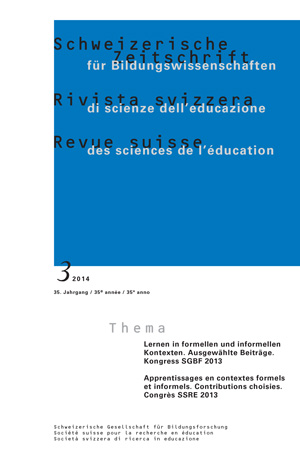Non-formal and Informal Learning in a Formal Setting integrating performing Arts education
DOI:
https://doi.org/10.24452/sjer.36.3.5105Keywords:
Performing arts education; informal learning; primary school; holistic learning; sociology of childhoodAbstract
This article reports some key findings provided by the “Theatre and Learning” project, carried out by the Scuola Teatro Dimitri (Verscio) in Canton Ticino with the support of the DoRe Swiss National Foundation program. The project introduces performing art education in schooling, as an informal learning activity with respect to the global learning approach emphasizing the relevance of socio-cultural dimensions. In this perspective, theatre should provide privileged conditions fostering the internalization of cultural heritage. The research procedure concerns: (a) a training course for the 4 participant elementary school teachers; (b) laboratories with children trained by theatre professionals about drama, movement, singing, music and playing; (c) set-up of four different performances played by the children alone. Qualitative data analyses are guided by some of the research hypothesis related to the reflexive and informal learning process among children (learning by experience), such as the hypothesis of motivation, differentiation, technical refining, integration of learning, entirety, communicative and emotional efficiency. Based on narrative data (drawn by personal documents, classroom journals, semi-structured interviews), results show how the most meaningful learning achievements were linked to increased capacity to carry out a rigorous formal training via performing art education. This experimental activity did not prevent their emotional expression nor their creativity, rather facilitated children in reaching a new integration between part and whole, originality and repetition, rationality and bodyness.
Downloads
Downloads
Published
Issue
Section
License

This work is licensed under a Creative Commons Attribution 4.0 International License.



